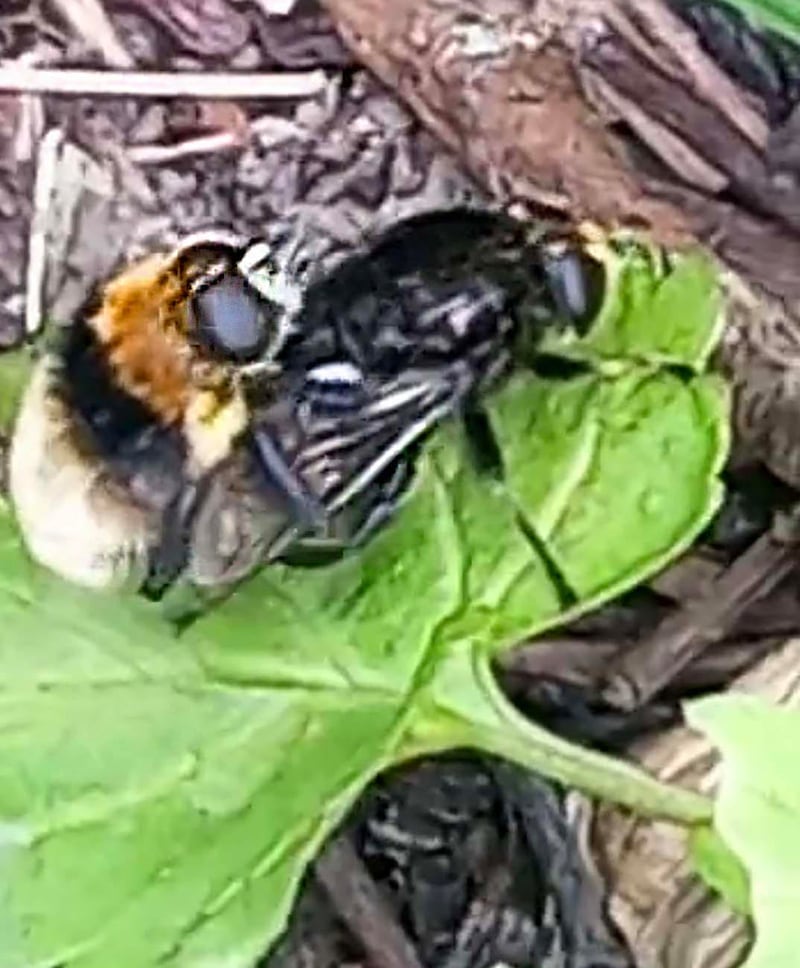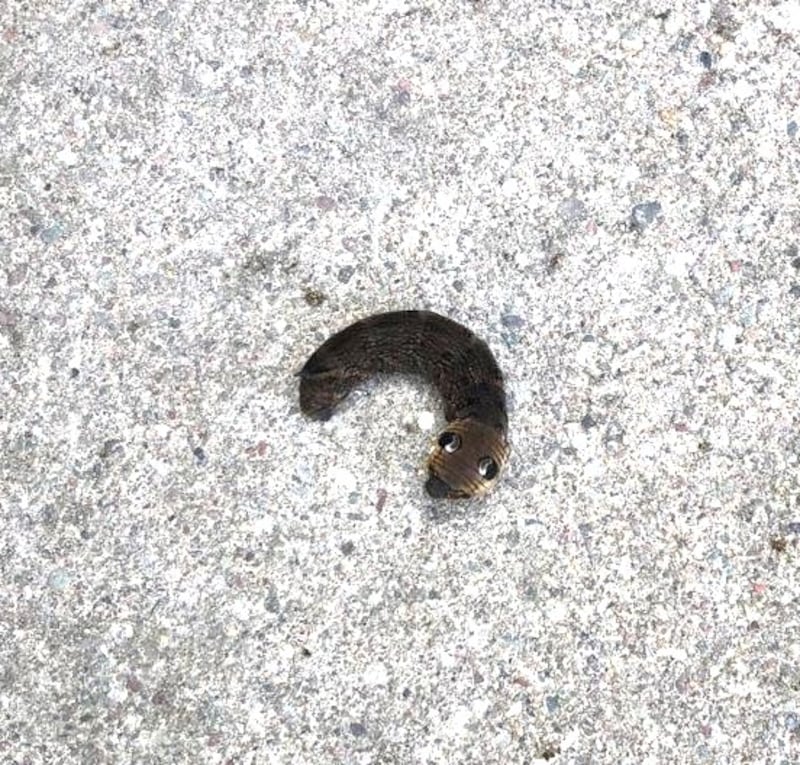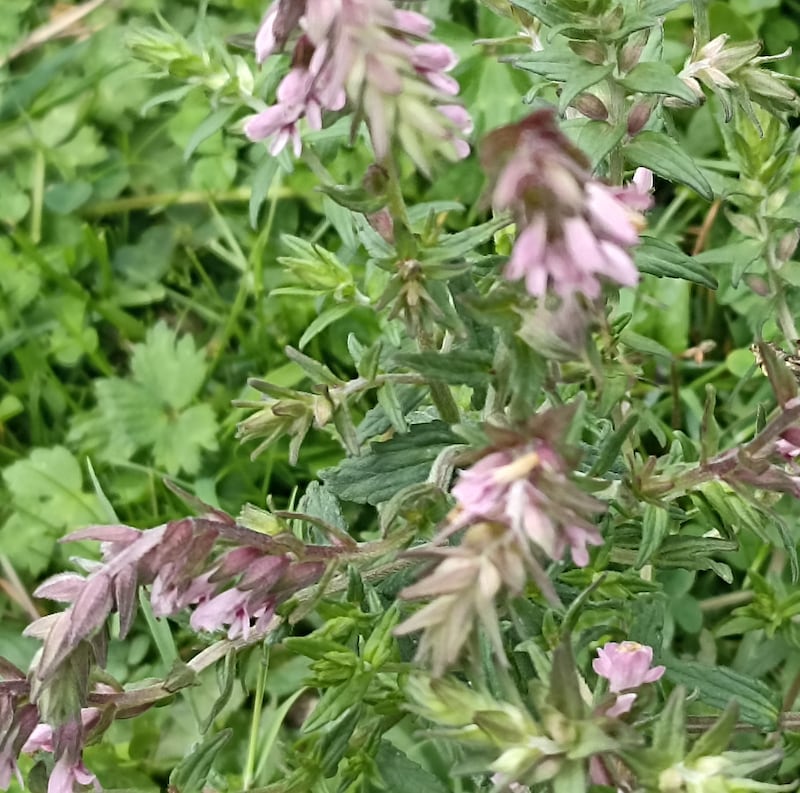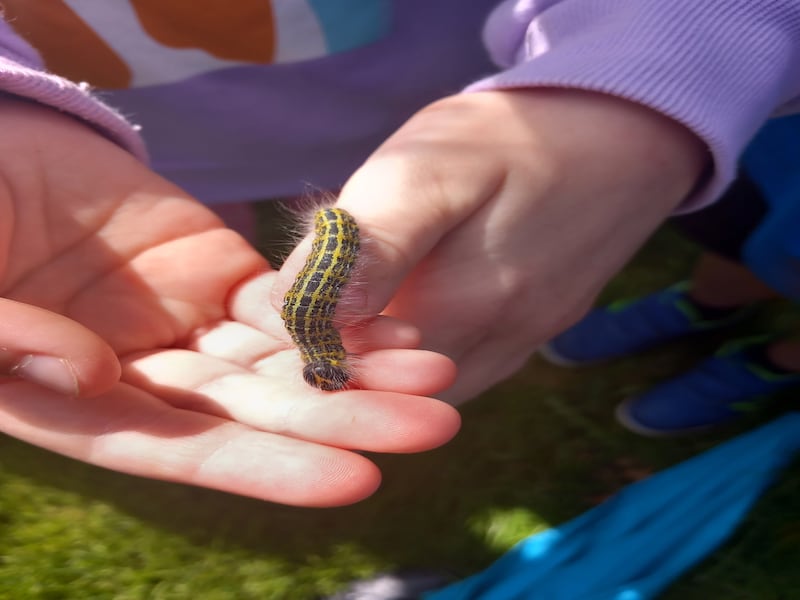Myself and husband Dave spotted this in our garden in Cabra in August. Apparently it is a hummingbird hawk moth, and it may be a little bit rare. It’s not a great photo as it hardly stopped moving at all. Veronica Rickard, Dublin
Hummingbird hawk moths are migratory and visit Ireland from farther south in Europe during late summer. They are day-flying moths that hover in front of flowers sucking nectar with their greatly extended tongues. They beat their wings so fast that they appear as a brownish blur, so you did well to get the photo.

I spotted these in my garden, way back in June. What is going on? Who is doing what to whom? James Behan, Drogheda, Co Louth
It’s not quite as bad as it looks. The Hymenoptera expert John Breen tells me that the mating couple are actually the same species (Volucella bombylans) even if they appear here to be quite different from each other. They are not bees, but hoverflies that mimic bumblebees. The male at the back resembles the buff-tailed bumblebee, as does the female, which looks blacker because her wings and the male are hiding her coloured parts.
READ MORE

My niece discovered this in the back garden recently. It looked for all the world like a tiny snake and it wasn’t a bit afraid of her. What is it? Brian Casey, Cleggan, Co Galway
St Patrick hasn’t been sleeping on the job – it is not any sort of snake but a caterpillar. It is the supremely adapted caterpillar of the elephant hawk moth mimicking a snake with devastating accuracy. It normally has a trunk-like snout, hence the name, but when alarmed it withdraws the snout, the eye-spot region swells up and it sways menacingly from side to side. The threat works every time.
Why does this herring gull have a red mark on the lower part of its bill? Is it a scar from an old injury? B Hill, Clonakilty, Co Cork
No. This is a herring gull in full breeding plumage. The chicks react to the red spot on the bill by pecking at it. This stimulates the adult into regurgitating food it has already eaten so that the nestlings can feed. Both parents have the red spot and feed their young in this way.

What is this heather-type flower that grows in abundance on my limestone soil despite the field being grazed for eight months of the year? The animals studiously avoid the plant, which grows upright to a height and width of about eight inches and has greyish foliage and mauve/pink flowers in July-August. Martin Glynn, Co Galway
It is red bartsia (Odontites vernus), which is common enough on damp pastures. It is a hemiparasitic plant that derives nourishment from the roots of nearby grasses. Maybe the animals avoid where it grows because the grasses around it are impoverished and not worth eating.

I found this caterpillar on the leaves of a hazel tree during a walk for Water Heritage Day in Graignamanagh. What is it? Indie O’Keeffe
This is the caterpillar of the buff tip moth, which graced this column a few weeks ago. It feeds on the leaves of hazel, among other trees. It hatches out from eggs laid by the adult and feeds gregariously in a group. Soon it becomes too big for its skin, which bursts, and the caterpillar wriggles out with a new, hairier coat. This happens four times in all, with each instar state being bigger, hairier and even a different colour than earlier ones. Numbers have greatly reduced due to predation by birds at this stage, which is why you found only one large hairy caterpillar.
Please submit your nature query, observation, or photo with a location, via irishtimes.com/eyeonnature













